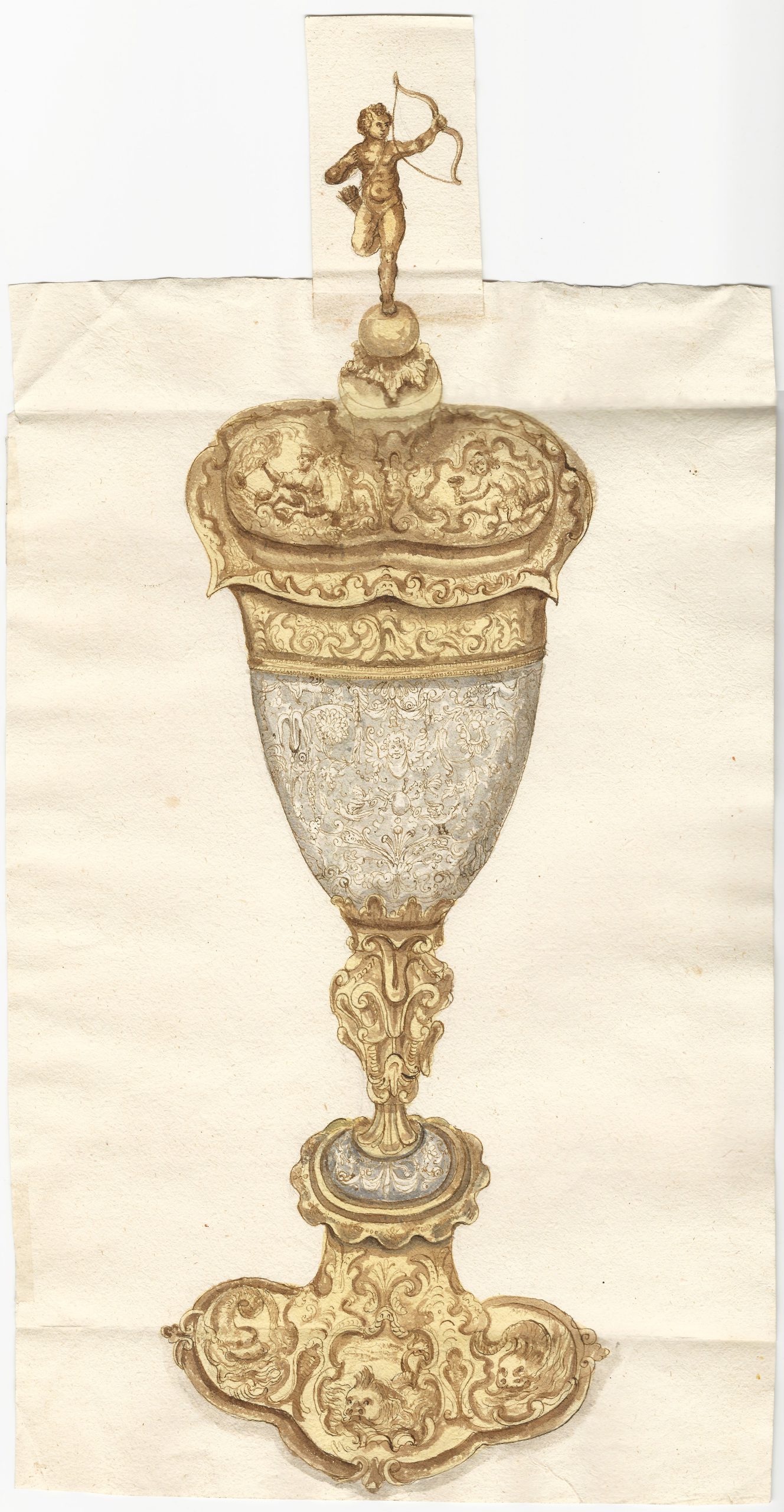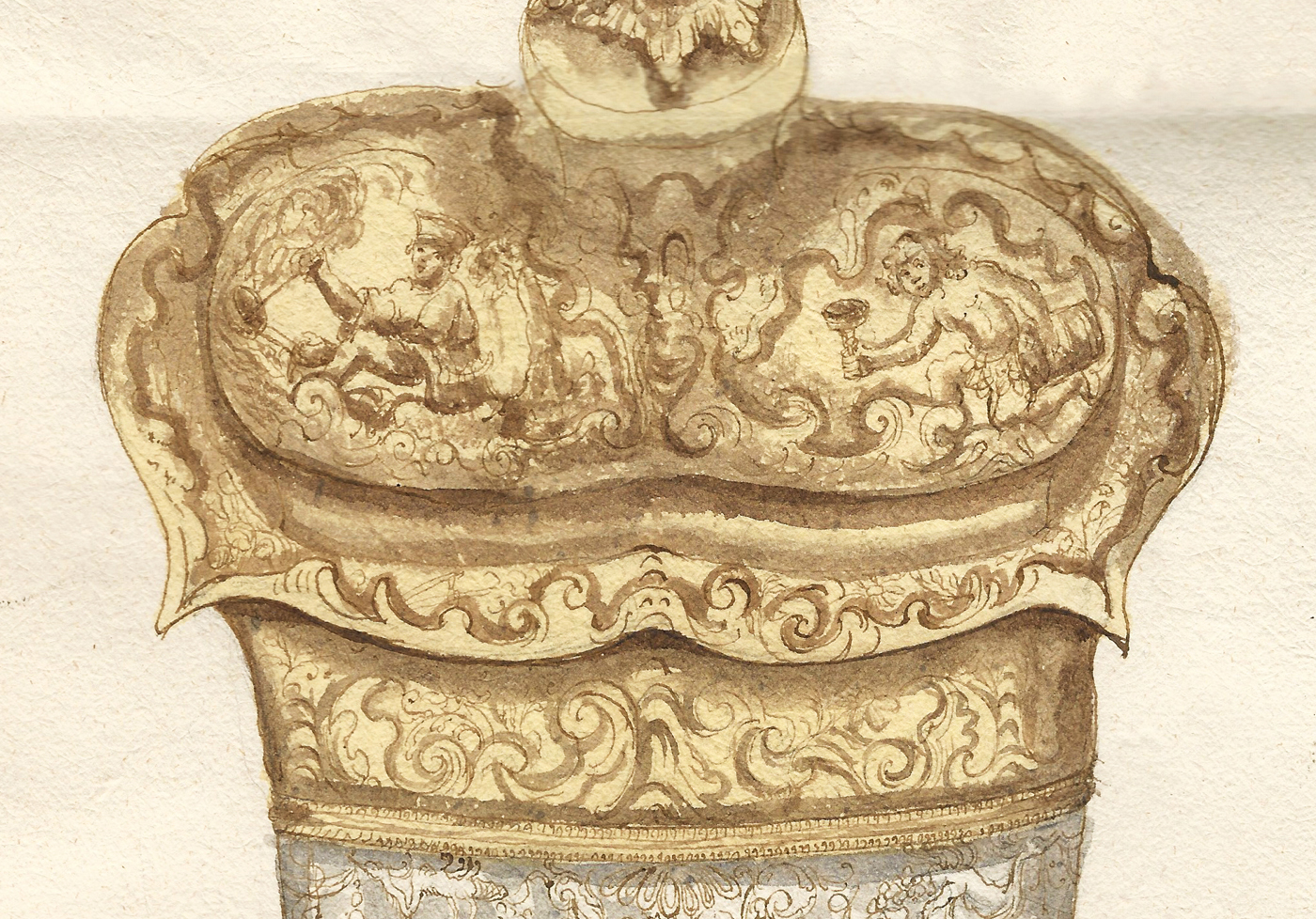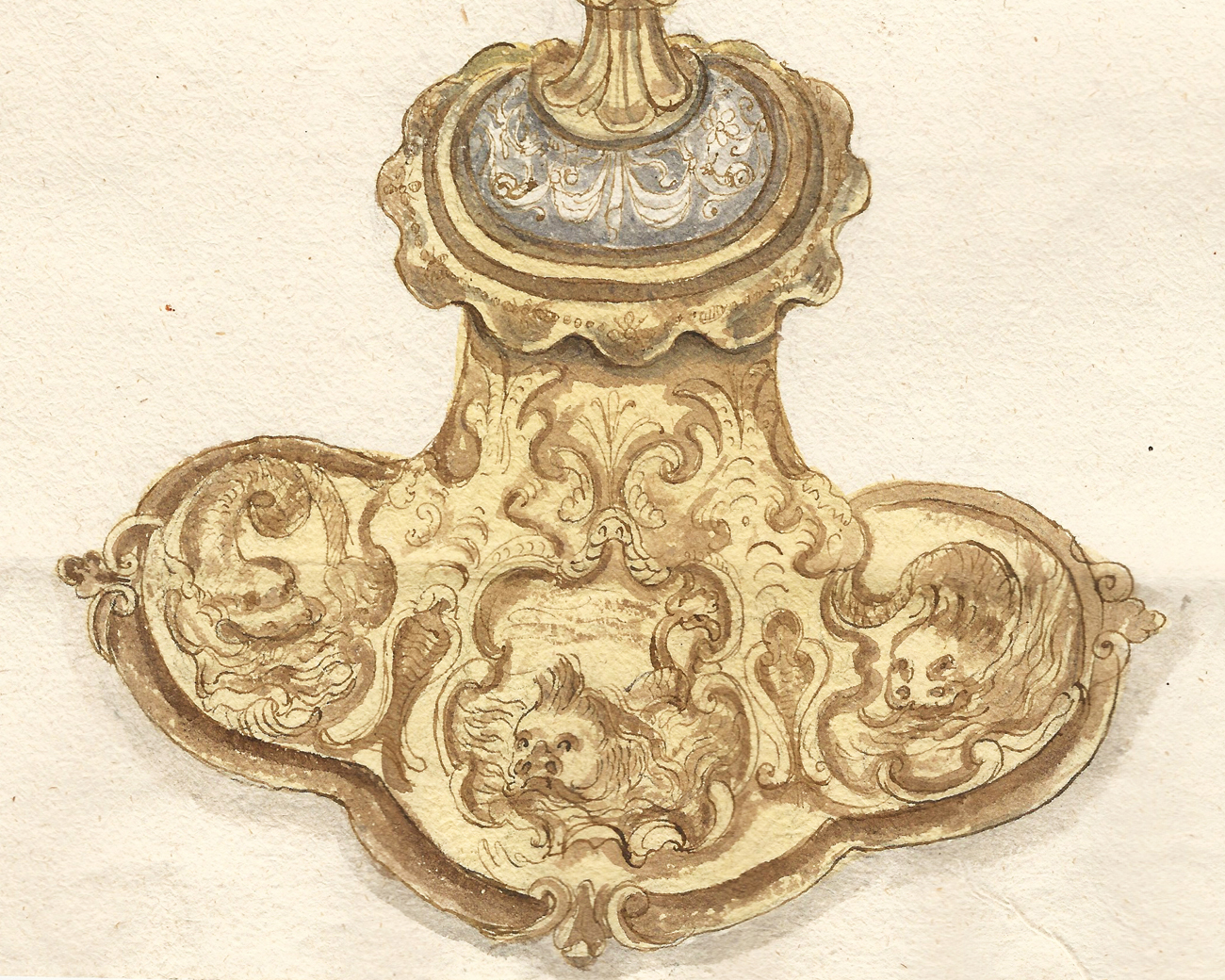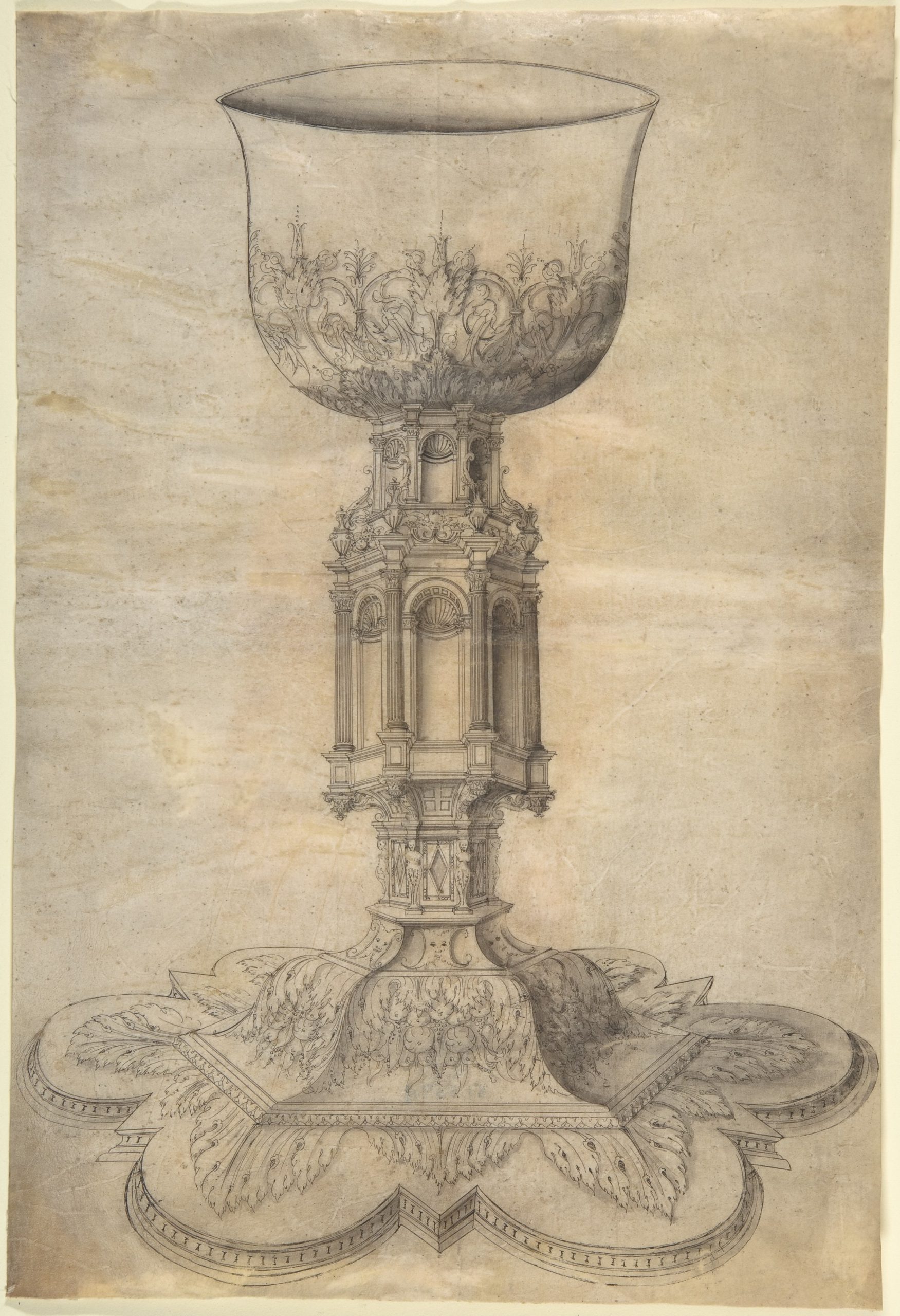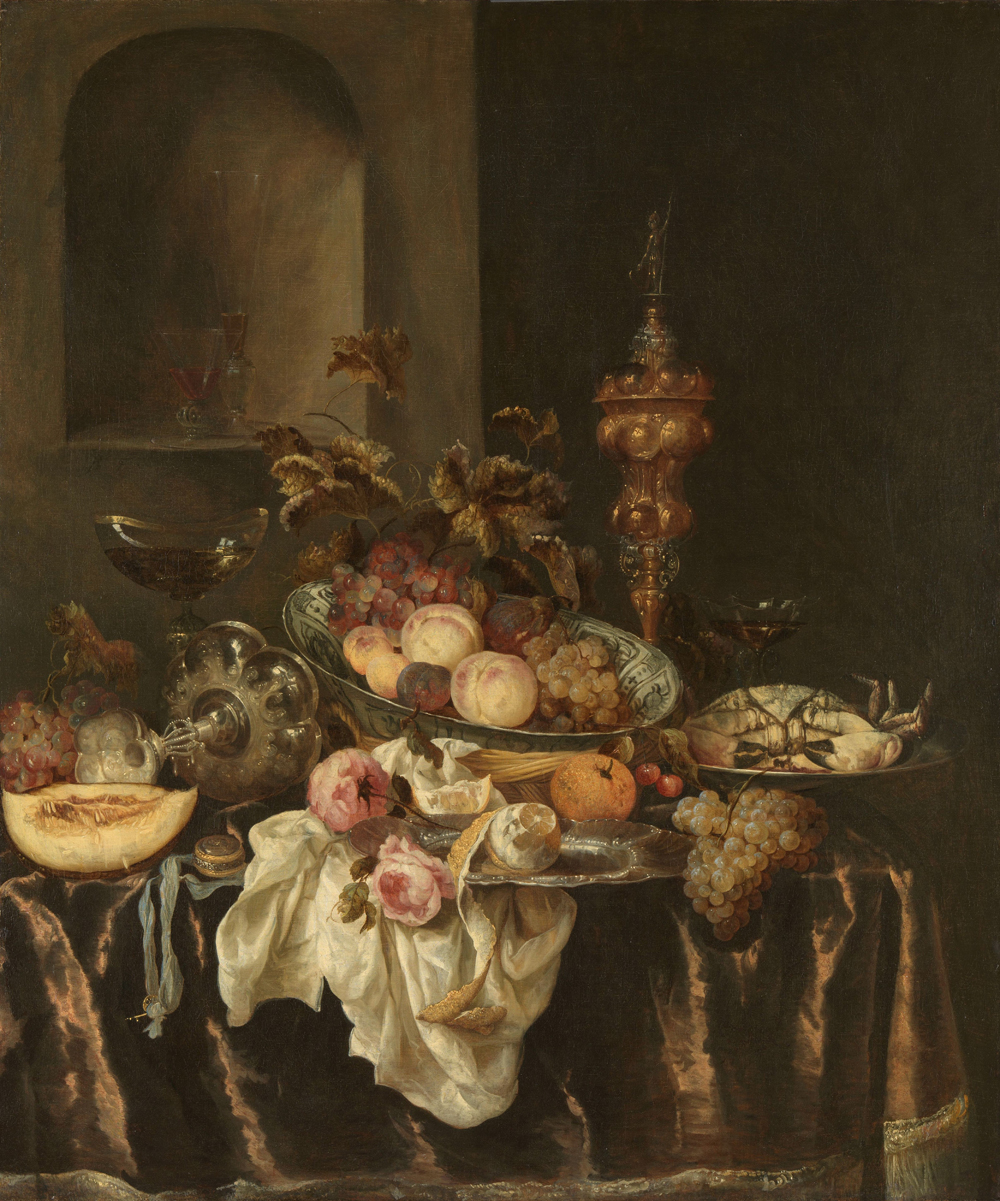SOUTH GERMAN SCHOOL, first half 17th Century
South German School, first half 17th Century
Design for a Silver-Gilt Cup with Cover
Pen and brown ink, grey , brown and gold wash, over traces of black chalk, watermark serpent with letter M,1 main sheet 434 x 272 mm (17.1 x 10.7 inch); additional sheet pasted down at the top 109 x 62 mm (4.3 x 2.4 inch); total height including addition 534 mm (21 inch)
Provenance
Private collection, The Netherlands
***
This large and fascinating sheet is likely to be a design for or a workshop ‘ricordo’ of a silver-gilt cup of the type that was highly popular in Southern Germany around the beginning of the seventeenth century. Examples are known by silversmiths working in Augsburg and Nuremburg. They were often profane rather than religious in function, as is evidenced by the Cupid adorning the lid of the present cup. A similar cupid is encountered on a silver-gilt cup in the Metropolitan Museum, New York (fig.).2
Little is known about working drawings by silversmiths, but it is thought that many of them worked out their elaborate designs on paper before commencing the actual work. These designs could furthermore be shown to prospective clients, who could have indicated alterations and suggestions relating to the design or iconography. In addition, workshops of silversmiths are likely to have kept visual records of items produced in the workshop, ‘ricordi’ in Italian, recording rather than designing three-dimensional objects. The drawings by the silversmith Jacques Ducercaeu (1520–c.1585/86) have been studied in some detail.3 A design for a chalice attributed to him is preserved in the Metropolitan Museum in New York (fig.).4 Characteristic for drawings by silversmiths is that they are often of large size, presumably the same size as the actual objects, and that they often show a distorted perspective, allowing for as much of the design of the object to be visible.
Silver-gilt cups were popular throughout the whole of Europe during this period and are frequently seen in ‘pronkstillevens’, a particular type of ostentatious still life. A good example by Abraham van Beyeren is in the Rijksmuseum, Amsterdam (fig.).5
SOLD TO THE RIJKSMUSEUM, AMSTERDAM, THE NETHERLANDS
1. Similar watermarks are found in paper dating from the middle of the 16th century.
2. By the maker L.T., active in the first half of the 17th century in Nuremburg, 34.9 cm high, inv. no. 17.190.573a,b.
3. Janet S. Byrne, ‘Du Cerceau drawings’, Master Drawings, 15, 1977, pp. 147-161.
4. Pen and black ink, grey wash, 323 x 220 mm, inv. no. 51.507.1; Byrne, op. cit., plate 12.
5. Oil on canvas, 126 x 106 cm, inv. no. SK-A-3944; P.J.J. van Thiel, Alle schilderijen van het Rijksmuseum te Amsterdam, Amsterdam/Haarlem 1976, p. 115, repr.
